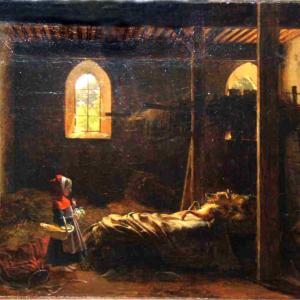We are delighted to share about the work of Kate Conley, Professor of French & Francophone Studies and Chancellor Professor of Modern Languages & Literatures, who recently co-edited "So You Want to be a Dean? Pathways to Deanship."
Archive
Archive
- Dr. Stephen Sheehi (Sultan Qaboos bin Said Chair of Middle East Studies) co-authored with Lara Sheehi (George Washington University Assistant Professor of Clinical Psychology) to publish "Psychoanalysis under occupation: practicing resistance in Palestine."
- Last year when I wrote about Santa stereoviews, I stated that I did not know of any stereoviews that depicted reindeer. Now, I stand corrected.
- William & Mary Libraries and the Dean of Arts & Sciences are pleased to provide funding to cover the registration costs for up to 5 faculty and graduate students interested in attending the Digital Humanities Summer Institute, June 5-9 (on-site at University of Victoria) and June 12-16, 2023 (online).
- The Provost's Office and William & Mary Libraries invite you to a Writers’ Retreat in Swem Library. The purpose of the retreat is to give you uninterrupted time to work on a specific writing project, complete research, edit a manuscript or prepare a grant proposal. The retreat will provide quiet space in Swem, along with food, beverages and (perhaps most importantly) STRUCTURE.
- Take a minute each day during final exams to recharge with these activities at Swem! All events will take place in the first-floor lobby area unless otherwise noted.
- Although National Thanksgivings were periodically proclaimed from Colonial times in America, Thanksgiving as a Holiday was not formally adopted until Abraham Lincoln declared a day of Thanksgiving in 1863.
- Our faculty at William & Mary are making global contributions with their research. In our recent blog series, we interview faculty with recent publications for insight into their scholarship. Dr. Fiona Shen-Bayh, (Assistant Professor, Government and Data Science) recently published Undue Process: Persecution and Punishment in Autocratic Courts.
- In this post, we introduce the newest member of our digital services team!
- In this post, we introduce the newest member of the Special Collections staff, Afua Ferdnance!
- Pumpkins are squash plants native to Americas and did not make an appearance in Europe until the early 1500’s.
- Swem Library has carved out a space on our second floor for a comics/graphic novel collection! Located in the nook at the front of the building, this collection contains approximately 500 titles, although new ones will be added regularly.
- In this post, we introduce W&M Libraries' new Development Associate, Daneen Resnick! Name Daneen Resnick Title Development Associate
- Say hello to our newest institutional access citation management tool available to William & Mary faculty, staff and students – Zotero! Zotero is an open access citation management tool – which means it has always been free to use, however, starting now, William & Mary Libraries is funding institutional access to Zotero’s cloud storage.
- Chris Howard (Professor of Government and Public Policy) recently published "Who Cares: The Social Safety Net in America."
- Once upon a time, so all the stories go, there was a librarian and an English professor who wanted to not only save their students money on textbooks but also innovate their teaching. Luckily, the concept of open education was familiar to them both and they set out to create a curriculum that would support their teaching objectives and hopefully be easy on their students’ wallets.
- Dr. Fiona Shen-Bayh, (Assistant Professor, Government and Data Science) recently published "Undue Process: Persecution and Punishment in Autocratic Courts."
- Candice Benjes-Small, Head of Research and librarian to Film and Media Studies, spoke to Professor Liz Losh, about her recently published book, “Selfie democracy: The new digital politics of disruption and insurrection.”
- W&M Libraries staff have been hard work over the summer months. A few of them were excited to share their favorite project with the W&M community. Paul Showalter, coordinator of instruction & assessment, shared about the workshops held by the research services team.
- W&M Libraries staff have been hard work over the summer months. A few of them were excited to share their favorite project with the W&M community. Drea George, a multimedia specialist, shares on implementing a student training program that improves the Reeder Media Center’s service to the W&M community.



















